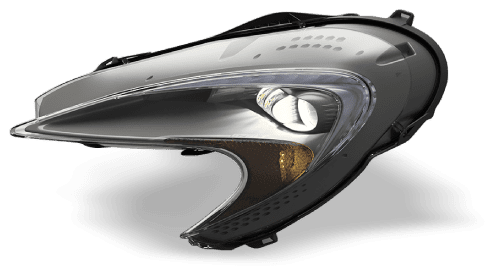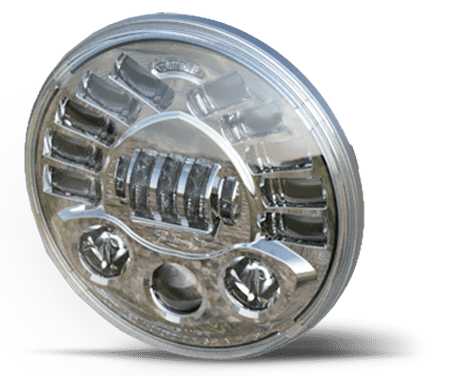
How Summer Heat Affects LED Vehicle Lights

Summer heat can be unforgiving for many aspects of vehicle performance, including automotive LEDs. These lights are efficient and bright, making them popular among vehicle owners. However, the combination of high temperatures and sustained sunlight exposure in the summer can pose challenges to their lifespan and performance.
Understanding how summer heat affects LED vehicle lights is essential for maintaining optimal functionality and preventing unnecessary replacements. Learn how the weather can impact your LEDs and how you can mitigate issues.
The Basics of LED Technology in Vehicles
LEDs, or light-emitting diodes, are common in modern vehicles due to their energy efficiency, compact size, and longevity. LEDs operate by passing an electric current through a semiconductor, which emits light as electrons move through its structure.
One of the standout features of this method for producing light is that it creates little heat compared to older technologies, making LEDs far more efficient. However, while the bulb itself remains relatively cool, the other components of an LED system, such as the driver and housing, can still generate and retain heat. This unique characteristic is both a significant advantage and a potential vulnerability when exposed to extreme environmental factors, such as summer heat.
How Heat Impacts LED Performance
Excessive heat is one of the primary threats to the performance of LED vehicle lights. When temperatures rise beyond what an LED system can handle, the first noticeable effect is a reduction in the light’s lifespan.
Heat degrades the semiconductor materials in the diode, causing them to lose efficiency over time. Wear and tear can lead to premature failure, requiring replacements. Another effect of overheating is decreased brightness. LEDs rely on precise energy usage to emit light at specific intensity levels. When components overheat, energy efficiency drops, leading to dimmer light output. This decrease in brightness can become a safety concern, especially during nighttime driving or poor weather conditions.
Another way summer heat affects LED vehicle lights is by causing color shifts. This not only diminishes the aesthetic appeal of the vehicle but can also strain a driver’s visibility by altering how light interacts with the road and surrounding environment.
Environmental Factors That Contribute to Overheating
Summer creates a hostile environment for LED vehicle lights due to various external factors, such as prolonged exposure to direct sunlight. Unfortunately, sunlight exposure can make the light housing and surrounding components hot. The operational warmth generated by the LED system exacerbates the risk of overheating. Vehicles parked outdoors in high-temperature climates are particularly vulnerable, as trapped heat can create an extreme greenhouse effect inside and around the vehicle.
Road conditions can also play a role. Asphalt absorbs and radiates heat with sun exposure, which increases the ambient temperature around a vehicle. This additional heat dissipation can elevate operating temperatures for LEDs, particularly those mounted low to the ground, such as fog lights.

Practical Ways To Prevent Overheating
The good news is that vehicle owners can employ effective strategies to prevent overheating and mitigate potential damage to their LEDs. These proactive steps not only extend the life of the lights but also ensure consistent performance during periods of hot weather.
One of the most effective solutions is to choose LEDs with built-in heat sinks or cooling systems. Heat sinks dissipate excess heat away from the semiconductor, maintaining a stable operating temperature. Some advanced LED models even offer active cooling fans for better temperature management.
Parking in shaded areas during the summer can provide some defense against heat buildup. Reducing the exposure to direct sunlight lowers the overall temperature of a vehicle, minimizing the strain on LED components when the lights are in use. Regular maintenance is equally important. Cleaning the LED housing and facilitating ventilation removes obstacles that may compromise airflow.
Upgrading to LEDs with high tolerance levels for heat is another option. Many manufacturers design heat-resistant LEDs that can withstand higher operating temperatures, making them more suitable for intense summer conditions.
Signs of Overheating in LEDs
You can find high-quality automotive LEDs for vehicle owners or fleet managers who want to make instant improvements to their lighting systems. However, you must keep an eye out for signs of overheating. Even top-tier lights may encounter technical problems under certain conditions, but catching the signs early means you can correct issues. Dimming lights are a very common indicator. If previously bright LEDs suddenly produce lower intensity, it may be an indication that heat has started to affect their performance.
Another sign to monitor is flickering. While flickering can sometimes occur due to power supply issues, it is also a warning sign of thermal stress in the LED system. Consistent flickering typically means the components are struggling to operate within safe temperature ranges.
Finally, be alert to physical damage on external components. Visible cracks or distortions in the LED housing may indicate that prolonged heat exposure is taking its toll on the system.
Why Choosing Quality LEDs Is Crucial
The most critical step to protecting LED vehicle lights from summer heat is investing in high-quality products. Premium LEDs have quality materials, advanced heat management features, and great durability, making them resistant to extreme conditions.
At J.W. Speaker, you will find automotive LED lights that can function at high temperatures without technical issues. Keep in mind that while LEDs can handle high temperatures, but the results come down to the design and who you’re buying it from.
Cheap alternatives may come with enticing price tags, but they typically lack the necessary qualities to withstand heat. Over time, this increased vulnerability will likely cost more in replacements, maintenance, and reduced performance. Choosing premium products offers peace of mind for vehicle owners who don’t want to compromise on safety or aesthetic appeal.

Keep Your LEDs Summer-Ready
The summer season doesn’t have to mean struggles for your LED vehicle lights. By understanding how heat affects LED performance and taking proactive steps to protect them, they’ll remain bright, efficient, and reliable throughout the hottest months.
Vehicle owners have to cover all their bases, from choosing heat-resistant LEDs to practicing maintenance and being aware of early warning signs, to safeguard their investments. Treat your car to the best because even the simplest upgrades can lead to safer, more enjoyable drives.


